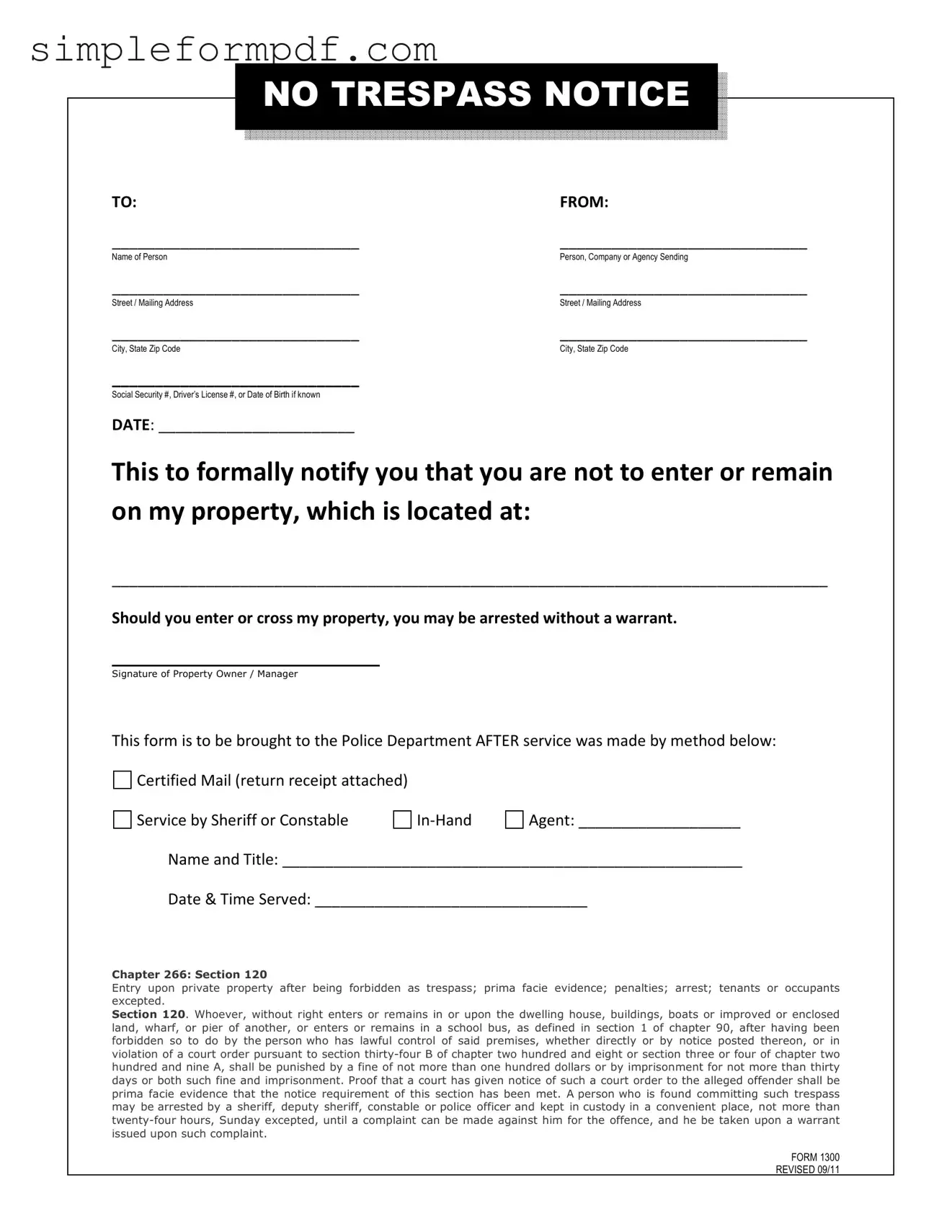No Trespassing Letter PDF Form
A No Trespassing Letter is a formal notice that informs individuals they are not permitted to enter or remain on a specified property. This document serves as a warning, making it clear that unauthorized entry could lead to legal consequences, including arrest. To ensure proper enforcement, it is essential to fill out the form accurately and deliver it through the appropriate channels.
To get started on your No Trespassing Letter, please fill out the form by clicking the button below.
Launch Editor

